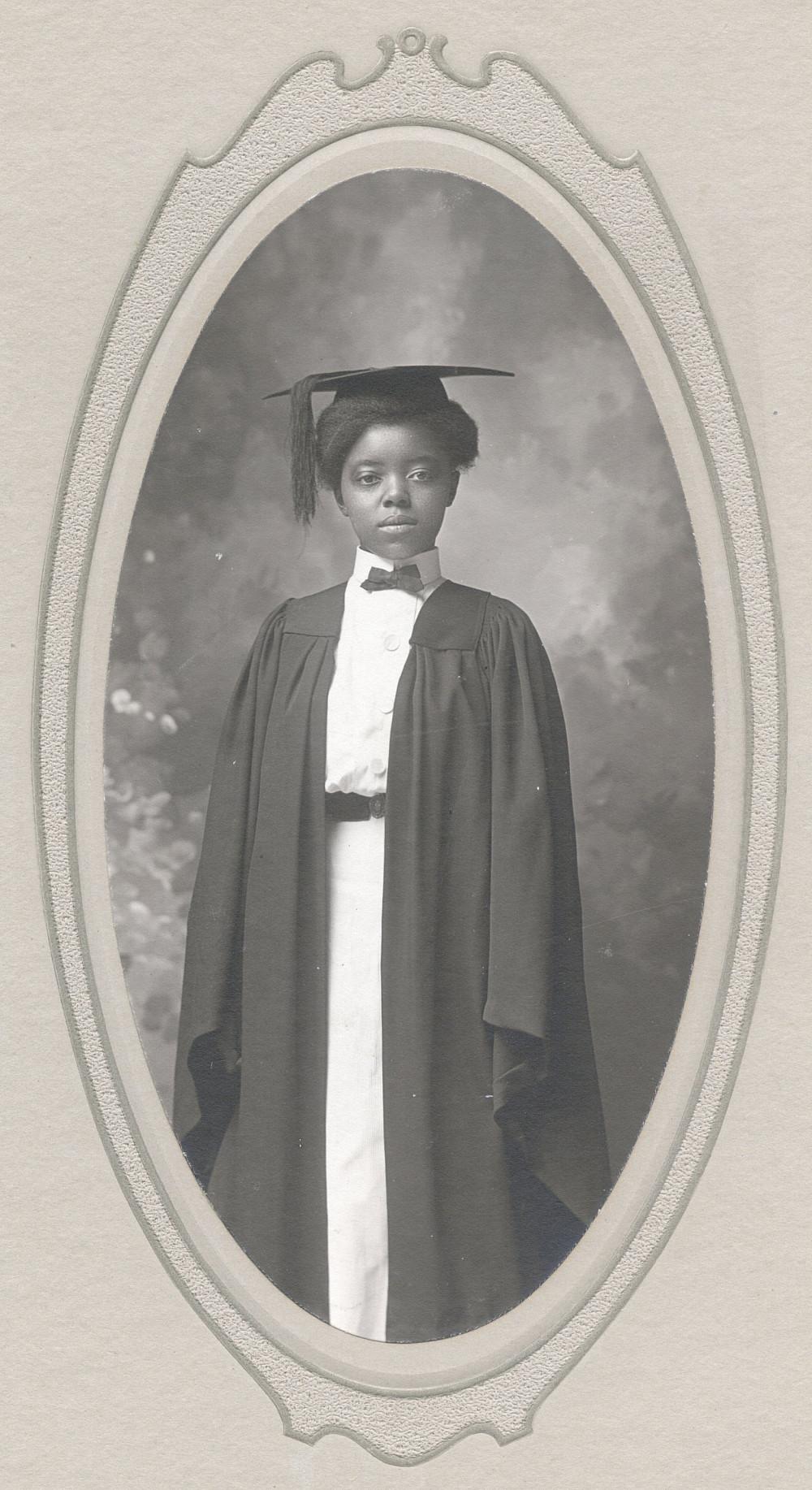Fridays with Fred: The Ousley Family
The Academy is a way out and up for a young man. Here he can acquire his first capital, get his foot on the first round. No capital is more valuable, more safe and more easily won. Everybody helps the earnest student, for some day he may help the world. The battle is to have the faith to make the start.” – Some Features of the Academy at Beloit – 1890’s-era brochure
Laurence Ousley certainly had “the faith to make the start.” One of Beloit’s earliest African-American students entered Beloit Academy in the fall of 1890, where he studied and worked for three years in the Scientific Division, leaving just before graduating. But the “way out and up” proved to be a struggle and he had to quell whatever ambitions he harbored about attending college and pursuing a career.
Both of his parents were born in the South, before the Civil War. His mother, Mary Ann Connor, came to Beloit in the early 1870’s where she married William Ousley. They moved to Chicago, lived for a time in North Dakota, and after William died, Mary Ann brought her children, William Jr., Laurence, and Grace, back to Beloit where she worked as a laundress. They lived near the college at 731 Church Street, the only African-American family in the neighborhood, more than thirty years before industrial needs brought a great migration of African-Americans to Beloit and other Midwestern cities. Determined to educate her children, Mary Ann gave them whatever opportunities she could afford, despite limited options.
After Laurence left Beloit Academy in 1893, he worked as a laborer at the Fairbanks-Morse factory. In 1900, his sister Grace became the first African-American to graduate from Beloit High School. Laurence helped her through four years at Beloit College, where in 1904 she became its first African-American woman graduate, just nine years after the college embraced coeducation. She taught at an orphan school in Harvey, Illinois, but returned home after she became ill. She died in 1908 at only 26. Beloit Academy principal and Church Street neighbor, Almon Burr, conducted the funeral services. An obituary in the Round Table revealed, “Since her graduation her one ambition had been to share her knowledge with the less fortunate members of her race.”
In 1905, Laurence replaced his brother William as janitor at the Beloit Public Library, a post he held until his death 38 years later. The Beloit Daily News commemorated his twenty-five years of service, noting that over the years “he has seen it grow from a few book stacks and some 500 volumes or more, to a large modernly equipped library of over 12,000 books.” Laurence apparently made good use of his access to the collection, according to an unpublished memoir by diplomat Robert C. Strong, class of 1931 and future ambassador to Iraq. “The janitor of the Public Library was Lawrence Owsley [sic],” he wrote, “a graduate [sic] of Beloit College in the early 1900s. He lived a block down the street from us, the only black household in the city not situated along the railroad tracks. For a good many years in the wintertime he tended our coke-burning furnace early morning and mid-evening, and did many maintenance jobs for us…I had many conversations with Lawrence, who was able to converse intelligently on any subject in which I was interested. He told me that despite his college education he had never been able to find a better job, and that he had read every book in the library. That gave me my first understanding of racism, of how unfair people could be, which has troubled me ever since…”
The Beloit Daily News described Laurence as “a representative of a group of respected colored citizens…who earlier made a place for themselves in the community.” He was involved in the Bethel A.M.E. church and was a member of the “Chicago Elks lodge for colored men”. A 1920 clipping in his sadly too-sparse archives file mentions that he served as chairman at a Harding-Coolidge rally, where a speaker “urged his hearers to support the straight Republican ticket…for the reason…that this party has shown itself friendly to the negro’s cause.”
Laurence Ousley died on June 24, 1943. A few days later Beloit College received word that he’d left it the family home at 731 Church and his entire estate of $10,000, “the sum ‘to be used to assist needy colored students therein…’” The June 30th edition of the Beloit Daily News featured an editorial devoted to Laurence Ousley, which served as both troubling commentary and moving tribute: “We can learn something from Lawrence (sic) Ousley. This gentle colored man, who lived unassumingly and spent his life at work many people would think humble and unimportant, had a vision and a generosity far beyond the farsightedness of most of us…Whatever needed doing Lawrence Ousley did, quietly and inconspicuously. And all the while as he grew old in the community’s service, he thought large thoughts that no one knew about.
Share:
Open gallery


